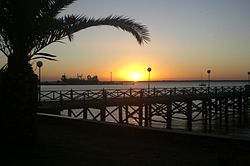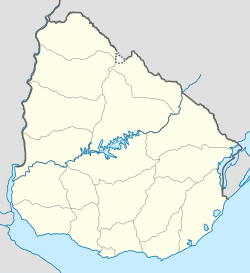Nueva Palmira | |
|---|---|
City | |
 | |
| Coordinates: 33°53′0″S58°25′0″W / 33.88333°S 58.41667°W | |
| Country | |
| Department | |
| Founded | 1831 |
| Founded by | Felipe Santiago Torres Leiva |
| Population (2011 Census) | |
• Total | 9,857 |
| Time zone | UTC -3 |
| Postal code | 70101 |
| Dial plan | +598 4544 (+4 digits) |
Nueva Palmira is a city in Colonia Department in south-western Uruguay.

